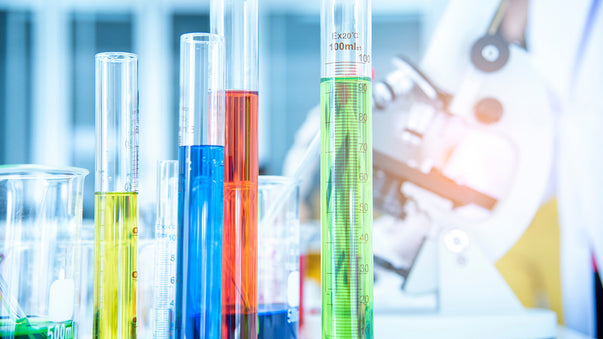New Drug Treats COVID-19 in Mice and Hamsters

A new drug, called "Ab8," shows promise in the fight against COVID-19 (see below). The tiny size of the molecules upon which the drug is based "not only increases its potential for diffusion in tissues to better neutralize the virus, but also makes it possible to administer the drug by alternative routes, including inhalation," notes a press release issued by University of Pittsburgh. "Importantly, it does not bind to human cells - a good sign that it won’t have negative side-effects in people."
"Ab8 not only has potential as therapy for COVID-19, but it also could be used to keep people from getting SARS-CoV-2 infections,” said researcher John Mellors. “The COVID-19 pandemic is a global challenge facing humanity, but biomedical science and human ingenuity are likely to overcome it. We hope that the antibodies we have discovered will contribute to that triumph."
New Drug Neutralizes SARS-CoV-2 Virus
Researchers led by University of Pittsburgh have isolated the smallest biological molecule to date that completely and specifically neutralizes the SARS-CoV-2 virus. This virus is the cause of COVID-19.
The antibody component is 10 times smaller than a full-sized antibody. It has been used to construct a drug known as "Ab8." It has potential use as a therapeutic and prophylactic against SARS-CoV-2.
A research paper is published in Cell. It reports that Ab8 is highly effective in preventing and treating SARS-CoV-2 infection in mice and hamsters. Abound Bio, a newly formed company, has licensed Ab8 for worldwide development.
Killer T Cells Reduce COVID-19 Severity
Researchers at La Jolla Institute for Immunology have found that a multi-layered, virus-specific immune response is important for controlling SARS-CoV-2 during the acute phase of infection. It may reduce COVID-19 disease severity, with the bulk of the evidence pointing to a much bigger role for T cells than antibodies. A weak or uncoordinated immune response, on the other hand, predicts a poor disease outcome.
The findings are published in Cell. They suggest that vaccine candidates should aim to elicit a broad immune response that include antibodies, as well as helper and killer T cells to ensure protective immunity.
Specific Brain Cells Determine Ability to Adapt
Experimenting with laboratory mice, researchers at University of Zurich have found which neurons in the brain are in command in guiding adaptive behavior. This behavior is the ability to constantly adapt to new situations.
A study is published in Nature. It indicates that a group of brain cells in the orbitofrontal cortex is particularly active during the relearning process. It appears that this is crucial to behavioral flexibility and our ability to adapt to new situations.
The researchers are persuaded that the findings may contribute to a better understanding of brain disorders in which the flexibility in decision making is impaired. This is the case, for example, in various forms of autism and schizophrenia.
Enhanced Dopamine Sensors for Brain Disorders
Scientists at UC Davis have enhanced a single fluorescent protein-based biosensor. It enables high resolution, real-time imaging of the spatial and temporal release of dopamine in live animals.
A research paper is published in Nature Methods. It reports that the scientists have expanded the color spectrum of a previously developed biosensor. The new sensors permit studying dopamine's release in more detail, and model its effects on neural circuits.
This could facilitate the development of safer next-generation therapies to neuropsychiatric disorders. In particular, it may help in cases such as depression, anxiety, schizophrenia, and addiction.
Soy-Based Compounds Reduce Bone Cancer
Researchers at Washington State University have found that the slow release of soy-based chemical compounds from a 3D-printed bone-like scaffold resulted in a reduction in bone cancer cells. It also built up healthy cells and reduced harmful inflammation.
Soybeans contain estrogens. They have been shown to impede cancer cell growth for many types of cancer without being toxic to normal cells.
A study is published in Acta Biomaterialia. It describes how the researchers used 3D-printing to make patient-specific, bone-like scaffolds that included three soy compounds. Then, they slowly released the compounds into samples containing bone cancer as well as healthy bone cells. The results seem promising.
High Resolution Analysis of Neural Circuits
Scientists at Harvard Medical School, Boston Children's Hospital, and European Synchrotron Radiation Facility (ESRF) have developed a new x-ray microscopy technique. It could help accelerate efforts to map neural circuits, and ultimately the brain itself.
A research paper is published in Nature Neuroscience. It describes how the scientists used x-ray holographic nano-tomography (XNH) to image relatively large volumes of mouse brain and fruit fly nervous tissue at high resolutions.
The scientists used XNH and artificial intelligence-driven image analysis to reconstruct dense neural circuits in 3D. They comprehensively cataloged neurons. And they even traced individual neurons from muscles to the central nervous system in fruit flies.
More Articles
Don't miss a beat! In our Pulse Newsletter, Thrivous curates the most important news on health science and human enhancement, so you can stay informed without wasting time on hype and trivia. It's part of the free Thrivous newsletter. Subscribe now to receive email about human enhancement, nootropics, and geroprotectors, as well as company news and deals.
Read more articles at Thrivous, the human enhancement company. You can browse recent articles in Thrivous Views. See other Pulse Newsletter articles. Or check out an article below.
-
Neuron-Like Nanotech for Brain-Like Computers
Brain-inspired or “neuromorphic” computers could be much more efficient than current digital technologies for a wide range of applications. Now, ...
-
Synthetic Antivirals Against COVID-19
Scientists at University of Washington have designed and synthesized miniproteins that act as potent and stable stable antivirals. They block ...


